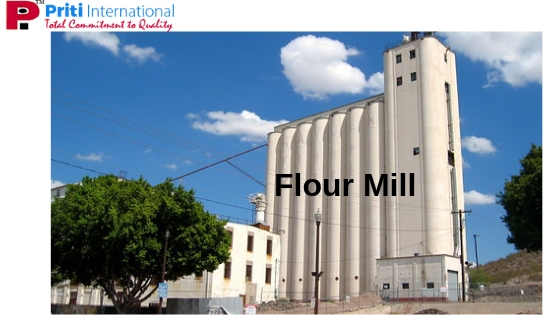In this age of mechanization and industrialization, every food item including flour is processed inside the mill plant. The turnkey basis flour mill in Kolkata is one such plant which produces good quality flour for everyday customer usage. After conducting intensive research and employing qualified engineers, this mill takes the help of a consultancy service who assist in complete designing, manufacturing and installation of this flour plant.
In this article, we will guide you in details about how flour is prepared inside these processing plants. Â
1. The first process in Grading The Wheat : After the processing plant receives the wheat in large amounts, it is meticulously examined and inspected. The workmen collect some sample for chemical as well as chemical analysis. There are several factors on the basis of which wheat grading happens. However, the most crucial of them is the content of protein. They then store the wheat in silos.
2. The next procedure is wheat purification : The flour we eat is free of impurities. This is because the wheat is purified before processing. It is made free of unknown foreign matter. The wheat is made to undergo many cleaning processes before it is ready to be transformed. This wheat is purified and re-purified over and over again.
• The first instrument used is a separator. In this machine, the wheat is passed over metal screens. Small particles are passed through this while larger particles like rocks and sticks are removed.
• Now the wheat passes through the aspirator machine, which functions as a vacuum cleaner. All the foreign matter is sucked up by this aspirator.
• A spiral speed separator is a cylinder that spins rapidly. Here the oval-shaped wheat grains automatically move towards the center and the seeds which are round stay on the sides. These are then removed.
• Other methods like the use of magnet are made to remove dirt and other elements from the wheat. Dirt, hair, metal pieces are eliminated. Electronic Color sorting machines sort elements of other color besides the actual wheat.
All these machines are provided by the turnkey project consultants.
3. The wheat is now prepared for grinding : After the whole wheat content is purified, it is put in for grinding. At first, the wheat is washed by soaking in warm water and spun dried inside a centrifuge. All the remaining foreign and dust particles are washed away during this time. The workmen now ensure to control the content of moisture in the wheat so that the outer layer of bran is removed easily before grinding. This procedure is also known as tempering or conditioning. While many other methods when used also exit the quantity of water present in the wheat, this procedure makes use of more water to reach this level.
In cold conditioning, the wheat is soaked in cold water for three days. In warm conditioning, the wheat is soaked in boiling temperature of 115-degree Fahrenheit for about 60-90 minutes. Although this method is barely used, the workmen steam the wheat instead of heating it straight. If the wheat after conditioning has surplus much moisture in it, the excess is removed via vacuum dryers.
4. The wheat is now ready for grinding : The wheat grains of different moisture and grades are blended together into one single batch which has all characteristics necessary for the flour to be manufactured. At this stage, the wheat is often processed in a machine known as the Entoleter which has fast spinning disks that hurl the wheat grains against small pins made of. The grains that crack during this process are considered not suitable for processing.
The wheat will now move in between two big rollers made of metal. Both the containers vary in sizes and move at variant speeds. They are attached with spiral grooves because of which the grains will crack open, therefore separating the wheat interior from the bran which is the outer layer. This product inside the roll is made to pass through metal sieves. The finely received material will now resemble a course type of flour known as farina or middling. Larger pieces are called semolina. The middling will now slowly move toward the middling purifier and the rest will move to the other beaker roll. The machine has to produce almost about five pairs of beaker rolls.
Now the middling is moved over to a vibrating screen over which air is blown. This removes the lighter particles mixed with them. They are then finely ground. This grinding is done with the help of smooth metal rollers. This grinned flour is passed through sieves to separate the flours of different quality and fineness. The flour is again re-grinned and the final product is obtained.
“Priti International” offers standard services for the operation of the turnkey based flour plant. You can also consult this company for quality consultancy services in other industries.

